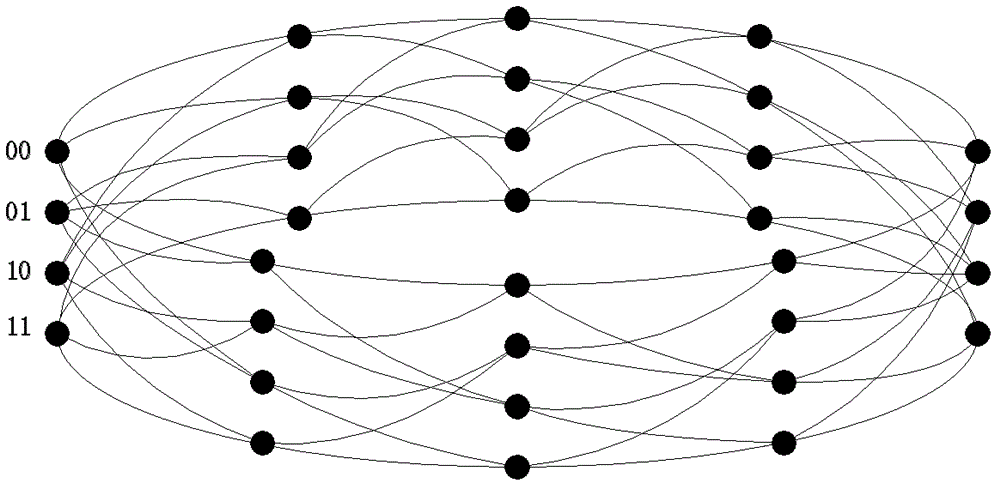A Decoding Method of Tail-biting Convolutional Codes
A tail-biting convolutional code and decoding technology, applied in the direction of error correction/detection using convolutional codes, data representation error detection/correction, etc. To solve problems such as popping operations, it can reduce the complexity and solve the non-convergence of the algorithm.
- Summary
- Abstract
- Description
- Claims
- Application Information
AI Technical Summary
Problems solved by technology
Method used
Image
Examples
Embodiment 1
[0019] For tail-biting convolutional codes, the initial state of the encoder is initialized with the last few bits of information bits, so that when the encoding ends, the end state of the encoder is consistent with the initial state, which is "tail-biting". ".
[0020] This embodiment provides a decoding method for a tail-biting convolutional code, which finds an optimal tail-biting path by executing a cyclic Viterbi algorithm. In the process of looping, there may be a situation where all surviving paths obtained by two loops are exactly the same, which is called a loop trap. The tail-biting convolutional code decoding method detects loop traps, and speeds up the convergence speed of the algorithm by effectively processing the loop traps.
[0021] Such as figure 1 The trellis diagram shown is obtained by a convolutional encoder whose generator polynomial is {7, 5} (octal). There are 4 states at each position k, and the total length of the trellis diagram is L=8, that is, 0...
Embodiment 2
[0042] In this embodiment, the tail-biting convolutional code decoding method described in the present invention is recorded as a low-complexity maximum likelihood decoding algorithm (reduced-complexity maximum likelihood decoder, RC-MLD), and it is compared with the WAVA algorithm, The WAVA algorithm uses a simple termination condition. This embodiment compares the block error rate performance (BLER) and required average number of iterations (ITER) of RC-MLD and WAVA.
[0043] The simulation condition is: an AWGN channel, and the coded bits are modulated by quadriphase shift keying (quadri phase shift keying, QPSK). For the WAVA algorithm, the maximum allowable number of iterations set in the simulation is N=20, for the RC-MLD method, since the theoretically possible maximum number of iterations is 2 v , so the following settings are made according to different application scenarios.
[0044] The first set of simulation experiments: compare the decoding performance of diffe...
PUM
 Login to View More
Login to View More Abstract
Description
Claims
Application Information
 Login to View More
Login to View More - Generate Ideas
- Intellectual Property
- Life Sciences
- Materials
- Tech Scout
- Unparalleled Data Quality
- Higher Quality Content
- 60% Fewer Hallucinations
Browse by: Latest US Patents, China's latest patents, Technical Efficacy Thesaurus, Application Domain, Technology Topic, Popular Technical Reports.
© 2025 PatSnap. All rights reserved.Legal|Privacy policy|Modern Slavery Act Transparency Statement|Sitemap|About US| Contact US: help@patsnap.com



